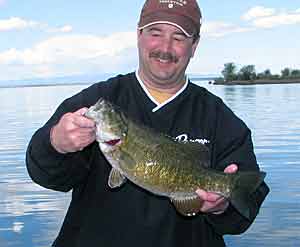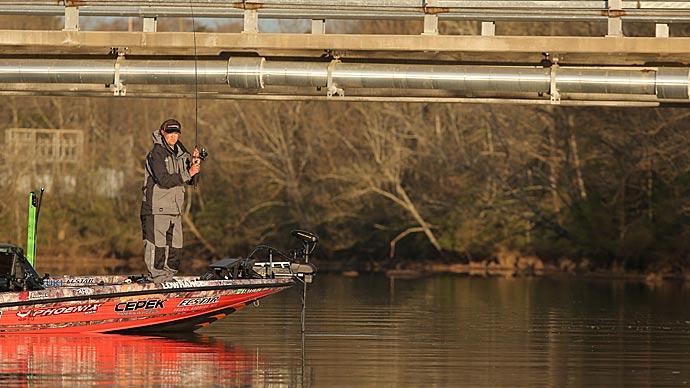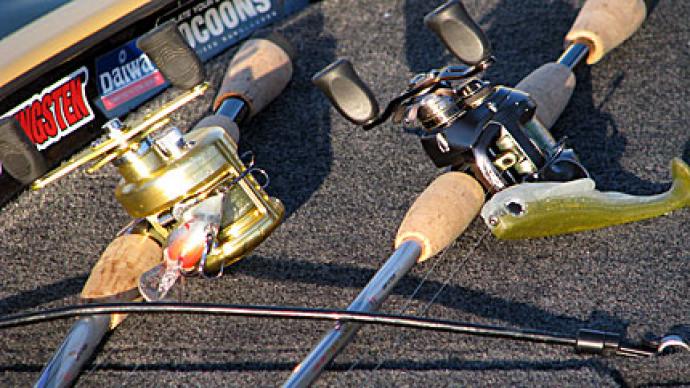
Nine out of ten times, when an angler hears the word "crankbait," the immediate picture that comes to mind is a large-lipped, deep-diver in clear, obstruction-free, open-lake water. Not so. If I manage to convince you that this is not the only application to use such crankbaits by the end of this article, then I have done my job. What we're discussing here ain't your daddy's crankbaits anymore!
The results were unbelievable the first time I used traditional crankbaits in heavy cover. That experience entailed throwing a Worden's Timber Tiger into a venerable maze of standing timber and gigantic laydowns, something I thought at the time was just short of insane. I figured by doing this. I would run up a massive bill in the form of lost cranks. This tune immediately changed significantly when bass began coming out of the woodwork to slam the fleeing lure.
Though as simple as it sounds, to throw cranks into cover, a certain amount of judgment and skill is required to make a technique like this work properly. With this tactic, location, as well as the actual type of physical cover, will both play a massive role in determining whether you're pulling bass out of the heavy stuff or spending the rest of the afternoon in the tackle shop replacing lost lures.
First of all, we'll discuss the type of cover needed to perform this seemingly suicidal presentation. While the technique, in theory, can be applied to anything, some areas are better than others. I prefer large laydowns, standing timber, stumps, and various man-made structures, the best of which by far is anchored docks and bridge support pylons. You'll usually want to avoid anything with a large number of intricate tangles, such as the end branches of laydown logs, cattails, bullrushes, and man-made Christmas tree-type reefs. Here is where a good pair of polarized sunglasses and a keen eye for productive cover will serve you well.
The basic technique, which I have learned through trial and error, is to intentionally "crash" crankbaits into large, solid pieces of structure. The purpose is to create the effect of a disoriented, fleeing baitfish hell-bent on escape from a predator. As it turns out, the number one reason for strikes for this presentation is usually not visual. Instead, the sound and, more importantly, the vibration produced when a crankbait comes in contact with various pieces of cover. A large crankbait speeding its way through a stump field, knocking and bouncing off wood, makes quite a vibration and sound array underwater, which will travel ten times father than it would above the surface. This is the equivalent of ringing an aquatic dinner bell for actively feeding fish. Of course, each crankbait and each type of cover will produce a different sound pattern, but regardless, the idea is generally the same.
Experimenting with different baits in different situations will eventually yield a few front-runners that you will want to use all the time. For education's sake, I will list my favorites, but these are not even close to the tip of the iceberg, as undoubtedly, each body of water will have its top producers.
So far, the baits I have found to work the best share some design similarities. The importance is not being in the body but rather a very wide lip. The lip, in this case, is a bit more important than the body, as it's usually the lip that makes contact with the cover you are intentionally running it into. A wide lip will give maximum sound and vibration when contacting cover and deflect the rest of the bait clear, which will prevent snagging and damage to the bait itself. For this reason, square bill crankbaits take the head-of-the-class.
Another key is buoyancy. Baits made from cedar or have hollow plastic bodies are best for this technique. On the rare occasion when they snag, these baits are incredibly buoyant, sometimes floating free.
Finally, a bait that works exceptionally well in this situation is the hard-to-find Fred Arbogast "Mudbug" crankbait. This giant, metal-tipped monster is ideally suited for this method, as apparent from its design and the testimony of those who use it.
As far as color, in this particular fishing discipline, it's one of the least important factors in the equation. As long as the sound and action are there, the color is less critical. A good rule of thumb is to keep the colors natural. In the muddiest water, shad, sunfish, and perch patterns work well. Again, the sound is the big seller here.
While on the subject of running crankbaits into things, let me say that if there were a secret weapon hidden within a technique, it would be this: If by chance you come across metal pilings of any sort, FISH IT! The sound of a crankbait meeting metal overrides some primal instinct of the bass that makes it want to kill that lure. I have had experience with smallmouth in a small river system and largemouth in a lake chain, where metal bridge supports are commonplace, and the results are mind-boggling. Though I am unsure what makes this compelling, it has to be the sound. Plastic on metal does something to bass that I wish all the other things we did to catch them did!
With this in mind, the next time you hit the water, and the old standby isn't paying off the way you'd like them to, consider "Crashing Crankbaits." You might be pleasantly surprised by the results.




